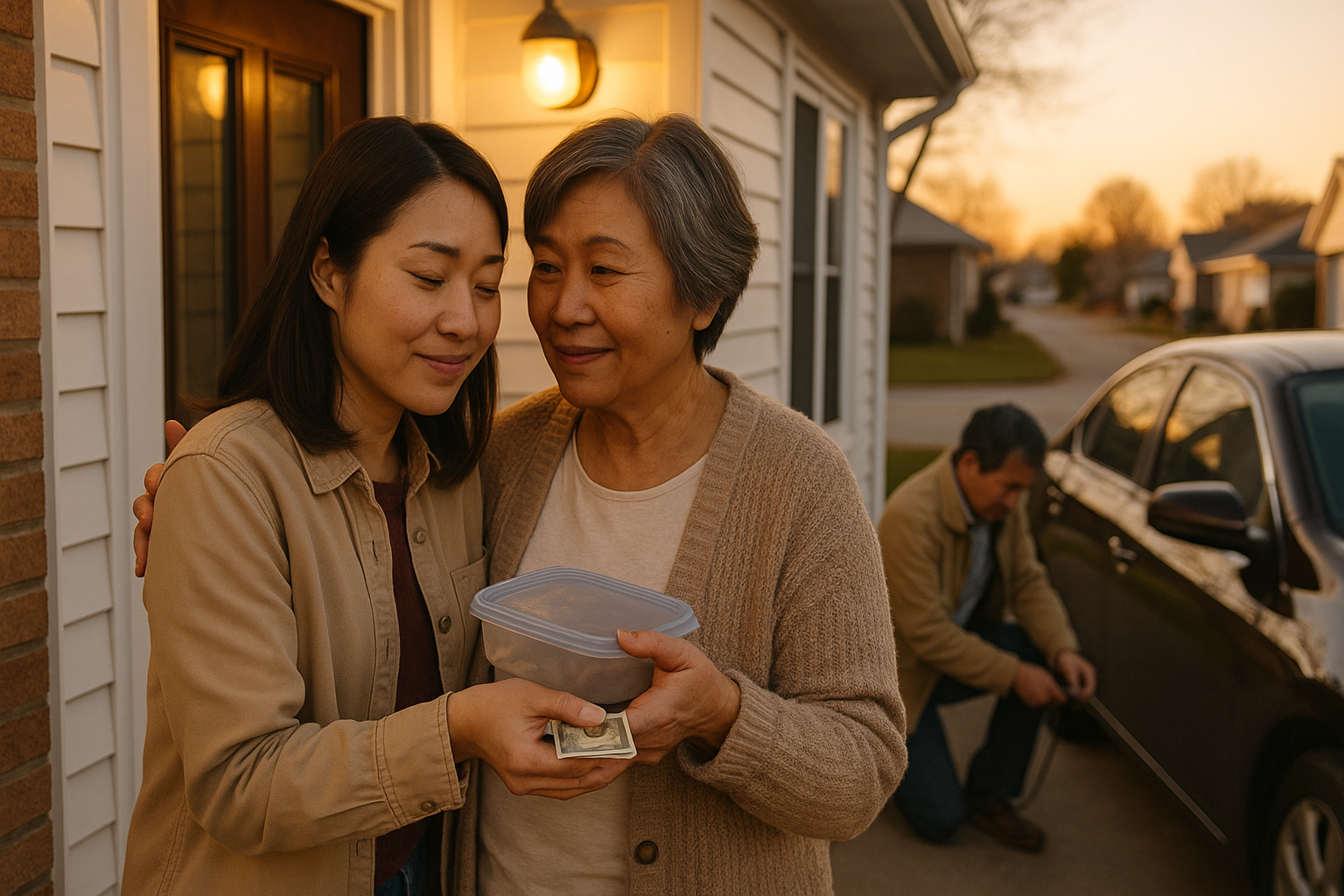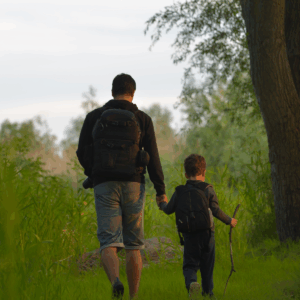I’ve noticed something interesting at the playground and around the dinner table with my kids and grandkids.
The teenagers and young parents in our family don’t roll their eyes at “old-fashioned” values nearly as much as headlines suggest. In fact, they often admire the quieter habits many of us carried into our 60s and 70s. Not the loud wisdom or the “back in my day” speeches—just the steady, unflashy things that hold a family together when life gets messy.
Here are seven strengths I’ve seen again and again, in my own circle and in readers who write to me. They’re simple. They’re teachable. And they still matter.
1) Show-up reliability
If I say I’ll be at the school pickup line at 3:10, I’m there at 3:00 with a banana and a water bottle. It’s not exciting. No one claps. But that kind of clockwork reliability builds trust you can stand on.
Younger generations notice. They’re juggling a lot—shift work, side hustles, calendar apps that buzz all day. When a grandparent or older neighbor shows up exactly when they said they would, it lowers the overall temperature of the room. Kids feel it too. A reliable presence calms nervous systems.
In my 50s, I started treating promises like appointments carved in stone. If I wasn’t sure I could do it, I didn’t say yes. That habit has followed me into grandparenthood. When I text “I’ve got the baby from 2–4,” my daughter doesn’t wonder whether I’ll cancel if something “comes up.” That certainty lets her plan, breathe, and—on good days—nap.
Reliability isn’t about never being late. It’s about making your word match your watch most of the time, and communicating early when plans truly have to shift. Quiet strength, big effect.
2) Make-do resourcefulness
Many of us grew up fixing rather than replacing. Buttons were sewn back on. Wobbly chairs got a shim. Toys with missing pieces became new games with different rules. That “make-do” reflex isn’t about being stingy; it’s about seeing potential before you see the trash can.
Younger folks tell me they admire this because it feels like sanity in a world that keeps shouting “new, better, more.” When a lamp breaks at our house, my grandkids don’t hear me mutter about ordering a replacement at midnight. They hear, “Let’s see what’s wrong with it.” Then we get out the little tool kit and poke around together.
That small scene teaches a few things at once: patience, problem-solving, and the idea that objects can be cared for, not just consumed. It also saves money they’d rather spend on experiences.
I can’t fix everything—no one can—but trying first, before buying, has become a family ritual. The kids now bring me their projects: bent scooter wheel, loose backpack strap, book with a torn spine. We don’t always win, but we always learn.
Related Stories from The Artful Parent
- 7 signs you were raised by emotionally intelligent parents, even if you didn’t realize it at the time
- 7 things your Boomer parents sacrificed that you only understood once you became a parent yourself
- 8 toxic things Boomers said to survive their childhoods that accidentally became their parenting style
3) Listen-first conversation
When I was a young manager, an older colleague said, “If the other person is still talking, you’re still learning.” It stuck. A lot of us from my generation came up in homes where you waited your turn and listened with your eyes as much as your ears. Face-to-face mattered. You didn’t check your pocket every five seconds for a new notification.
I try to carry that forward with the younger adults in our family. When one of my kids calls, I put the phone on speaker, set it down, and stop doing dishes. When a teen starts telling me about a friendship knot, I bite my tongue on the tidy lecture and just say, “Tell me more.” They relax. The story unfolds. Half the time, they solve their own problem without me landing a single “lesson.”
Listening-first doesn’t mean you never share a viewpoint. It means you earn the right to be heard by making someone else feel safe first. Younger generations admire that because it’s rare in a world of hot takes. And when they feel heard, they’re more likely to ask, “What do you think?” That’s your moment—short, kind, practical.
4) Patience with process
We learned to wait for pictures to be developed, for the mail to arrive, for gardens to sprout. That doesn’t make us saints; it just means we had more practice at not getting everything instantly. The upshot? Many of us are steady around frustration. We don’t love lines, glitches, or delays, but we can ride them.
Kids and young adults pick up on this. When a cake sticks to the pan at a birthday party, they watch to see who panics. If the older person in the room laughs, reaches for a spoon, and turns it into a trifle, a tiny miracle happens: everyone else relaxes. The party shifts back to joy.
I’ve seen the same thing during homework disasters. A grandchild’s project gets deleted. We breathe. We write down what we can remember. We rebuild piece by piece. Patience doesn’t eliminate the problem, but it keeps it from growing fangs.
- 7 morning routines that build more mental strength than any gym workout - Global English Editing
- 8 secret worries people over 60 carry but almost never admit out loud - Global English Editing
- You know you’ve succeeded as a parent when your adult children display these 10 subtle behaviors - Global English Editing
If you’re working on your own patience, try this little practice I used in my 50s: add five “gratuitous minutes” to everything. Leave five minutes earlier. Give a recipe five extra minutes before calling it done or ruined. That sliver of margin turns anger into adjustment.
5) Community instincts

Where I grew up, neighbors borrowed sugar, returned casserole dishes, and kept an eye on each other’s kids by default. We didn’t call it “mutual aid.” It was just Tuesday.
That instinct still lives in a lot of boomers. We wave to the mail carrier by name. We know which porch light means “new baby.” We take the trash can up the driveway for the person recovering from surgery without texting first to ask if it’s okay. Young families love this because it shrinks the distance between “I’m on my own” and “We’re in this together.”
When our youngest grandchild was born, the street turned into a relay. Someone watered our son and daughter-in-law’s garden. Someone else dropped off frozen soup. I pulled their bins to the curb and tossed a note in the mailbox: “You sleep. We’ll handle Tuesday’s odds and ends.” No committee. Just small kindnesses.
I hear a lot of younger adults say they long for this kind of neighborhood. My advice is simple: don’t wait for someone to organize it. Be the first person to wave, to learn a name, to put a number on a sticky note and say, “If you ever need a hand, I’m up early.”
6) Long-view perspective
By your 60s or 70s, you’ve watched cycles come and go—housing runs hot, housing cools, technology dazzles, technology dates, parenting advice flips from “toughen up” to “tune in.” You’ve also seen how few things are truly permanent.
This perspective isn’t cynicism. It’s ballast. When a younger friend calls me in a panic about a rough patch at work, I don’t dismiss the stress. I just widen the frame. “Remember last year when your team thought you’d never land a new client? And then you did, from the unlikely place?” Zooming out doesn’t solve the problem, but it changes the feeling. It moves people from catastrophic to capable.
At home, the long view softens despair over the little stuff. A child’s reading slump. A teen’s first heartbreak. A month where money is tight. Seeing beyond the current spike gives everyone breathing room. Kids learn that feelings move, not live forever. Younger parents learn that hard seasons are still seasons.
I keep a tiny notebook by the kettle with a list of “we got through” moments. When I’m tempted to dramatize, I flip it open and let evidence do the talking.
7) Hands-on competence
I don’t mean we all know how to rebuild an engine. I mean we’re comfortable doing real things with our hands—hanging a picture straight, chopping onions without bloodshed, changing a tire, patching a leaky hose, setting a table that says “you’re welcome here.”
Younger generations admire this because it turns emergencies into chores and chores into small wins. If the power flickers during dinner, who lights the candles and keeps the mood? If a bike chain slips on the way to school, who flips the bike and pops it back on without a lecture? The person who can do a few practical things makes life feel less fragile for everyone.
If you want to pass this along, teach one tiny skill at a time. Not with a speech—side by side. “Want to learn a knot that keeps the tarp from flying away?” “Want to cut an onion the safe way?” Kids remember these lessons because they’re useful and short. Then, the next time something breaks, you’ve got a helper instead of a spectator.
Final thoughts
You don’t need to change your personality to carry these strengths. You just need to pick the smallest version and repeat it. Reliability can be as humble as being five minutes early.
Resourcefulness can be as simple as mending a seam. Listening can be two more questions before you offer advice. Patience can be counting to five before you react. Community can be one extra hello on your evening walk. Long view can be a line in a notebook. Hands-on competence can be a knot you remember from Scouts.
The truth is, young people are watching us more than we think. Not for perfect answers, but for steady examples. When our actions say “This is how we do things in this family,” it gives them something solid to push off from as they build their own lives.
I’m not done learning from them either. They’re teaching me about boundaries, mental health, and how to ask for help without shame. It’s a good trade. That’s the real joy of being a grandparent or an older friend—you get to exchange strengths across the generations and watch everyone grow a little taller.
So, which quiet strength will you practice this week—and who’s the youngest person you’ll invite to practice it with you?



